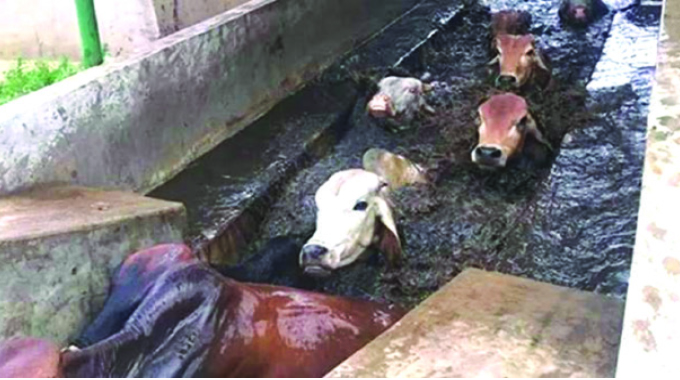Signature Hwange Units 7 and 8 add spark to Zim-China relations

Prosper Ndlovu in Hwange
PRESIDENT Mnangagwa yesterday officially commissioned the US$1,5 billion Hwange Thermal Power Station Units 7 and 8 Expansion Project in Matabeleland North Province, which has added 600MW to the national grid.
The country is already feeling the positive impact of this massive investment, which has been facilitated by the Second Republic, and is a critical enabler towards the realisation of the National Development Strategy 1 (NDS1) and Vision 2030 targets.
President Mnangagwa joined several stakeholders here to celebrate the milestone completion and commissioning of the massive project that has significantly improved the power supply situation in the country.
The Government successfully secured loan funding from China in 2018 and the project has been successfully implemented by a Chinese contractor, Sinohydro Corporation. The project is a major success for Zimbabwe, as it fulfils one of the promises made by President Mnangagwa on improving the power supply in the country in line with the key aspirations of NDS1.
The project scope involved a power plant, which entailed the installation of two electricity generating units, each having a net output of 300MW, and the construction of two new 400kV substations (330kV Sherwood B and 400/330 kV Hwange B Substation) a 400kV 310km transmission line from Hwange to Insukamini in Bulawayo.
Another 40km long transmission line has been established from Insukamini to Marvel in Bulawayo for the delivering of power. This effectively leaves the Hwange Thermal Power station complex (Units 1-8) with an installed generation capacity of 1 520MW.
The transmission and distribution component of the project seeks to integrate Units 7 and 8 into the existing transmission infrastructure (national grid)
Speaking to journalists after touring the massive signature project, President Mnangagwa who was accompanied by his deputy, Dr Constantino Chiwenga, Cabinet ministers and senior Government officials, expressed satisfaction with the scope and quality of works.

The Hwange Units 7 and 8 Expansion
He said the fruition of the project is a culmination of excellent bilateral relations with China.
“On behalf of the Second Republic and indeed on behalf of the people of Zimbabwe, today we are witnessing the commissioning of Unit 7 and 8 here at Hwange
“The journey began in April 2018 when I visited China and I had a meeting with the President of China, my brother Xi Jinping. In that discussion, I had a list of over 10 projects, which I was shopping for his assistance and he chose to make a political decision to support us,” said President Mnangagwa
“Energy is a critical enabler for our industrialisation and modernisation. So today, I’m wondering that when I came here in 2018, this was just plain when we came for groundbreaking and now I can’t remember where I was standing.”
President Mnangagwa directed his officers to avail him with perfect pictures that he would send to President Xi to show his gratitude for the success of the project.
He said the project’s success has shamed those who imposed sanctions on Zimbabwe, noting that the country now has adequate power to meet domestic demand.
The President, however, said the country would not sit back and relax but is forging ahead with exploring other projects to further beef up power generation in tandem with the growing needs of the country’s growing economy.
This includes tapping into power exports and helping the region achieve energy sufficiency, he said.
“As Sadc there is a deficit of nearly 6 000 to 7 000MW and whichever country can produce excess power there is a market. So we, as the Second Republic, will leapfrog to satisfy that deficit.”
By adding 600MW of electricity to the national grid, the project has helped close the gap in the country’s power supply. Given that all units are currently operational, this goal has been accomplished.

Technicians go about their duties in the control room in Hwange yesterday
Among other benefits, a total of 74 houses were built by ZPC as part of its Relocation Action Plan (RAP) for affected persons who were impacted by the construction of the new Transmission and Distribution Line.
Several water outlets were also placed along the Deka Upgradation Project pipeline as part of ZPC’s Corporate Social Investment as a way to give back to the Deka community. The Hwange Expansion Project and the project were carried out simultaneously.
In order to make sure that no one and no place is left behind, there was a purposeful local empowerment plan (Hwange — both rural and urban areas) where the locals were given first priority and employed for these projects.
“These employment prospects extended to the entire population of Zimbabwe. The project provided employment benefits to more than 4 000 Zimbabwean people,” said the power utility.
The Zimbabwe Power Company has said while the project has been completed, the utility can continue using the employer offices that were built as a result of the project.
Sinohydro, the contractor, has further donated 500 chairs and 500 desks to Neshaya Secondary School, which has helped the pupils by providing an enhanced furniture base, which gives them a more respectable and organised learning environment.
The contractor also provided the Covid-19 Centre with Covid-19 Personal Protective wear in addition to donating US$30 000 to the Five Mile Hospital, an isolation facility for infectious diseases. The Covid-19 Centre and the Five Mile Hospital were able to fully render their services to the local community through these donations.
Young engineers were hired to work on the Hwange Expansion Project, realising local empowerment through the technological know-how that Sinohydro imparted to the people of Zimbabwe.
The delivery of local products, such as cement, bricks, pit sand and other supplies for the project’s development, which is worth more than US$117 million or 10 percent of the contract, helped in uplifting the local business community and in turn creating jobs.










Comments